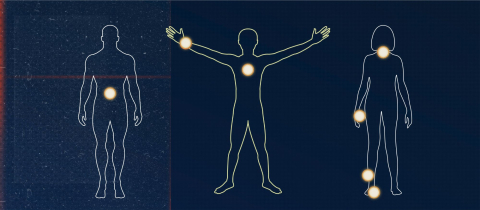Bach flower remedies have been around for close to a hundred years and were the brainchild of Edward Bach a British physician. Actually, there doesn’t seem to have been much “brain” involved in the development of this curious alternative healing method. Bach was a traditionally trained physician who became disenchanted with the way medicine was being practiced and began a search for novel healing methods. Then in 1930, at the age of thirty, as he was walking through a field of flowers glistening with dew, he had an epiphany. He somehow surmised that the spiritual essence of a flower was transferred to the dew when the flower was exposed to the sun, and that this dew had healing properties.
This remarkable insight came to Bach, as he maintained, through “inspiration.” He found that to sense a flower’s specific therapeutic potential, all he needed to do was hold a petal in his hand. Bach then went on to develop his healing essences by exposing flower petals floating in a glass bowl filled with spring water to sunshine. He claimed that in this fashion the flower’s spiritual energy was transferred to the water, a few drops of which could then be used for healing purposes. Bach’s bizarre notion was that the spirit of the plant communed with the human spirit and alleviated negative moods and the “lack of harmony” between the soul and the body which causes disease. Illness, Bach maintained, “will never be cured by present materialistic methods, for the simple reason that disease in its origin is not material, but is the result of conflict between the Soul and the Mind and will never be eradicated except by spiritual and mental effort.”
Different flower essences are used for different purposes. For example, wild oat essence directs the confused or lost individual toward his or her life path. This, it is said, is the perfect remedy for the "seeker" type personality to ease his soulful yearnings and tiresome wanderings. Wild Oat is also recommended for youth seeking a vocation or anyone experiencing a mid-life crisis. So where is the proof for such claims? The marketers of Bach remedies say that they have no interest in proving the remedies work, they just let the customers make up their own mind. But actually others have carried out placebo-controlled trials. What did they show? That all subjects, whether in the Bach flower essence group or the placebo group, experienced a decrease in anxiety, but there was no difference between the groups.
The conclusion is that Bach-flower remedies are an effective placebo for anxiety but do not have a specific effect. So if you are using “Five Flower Rescue Remedy” to ease fear and restore state of calm and confidence, as is claimed, you are actually getting an inconsequential dose of flower extract with a heaping dose of placebo. Of course I may only have this opinion because I’m not taking any beech flower essence which “helps lessen one's tendency to be judgmental toward others or hypersensitive to their environments. Critical and blaming natures are often an indication of inner feelings of vulnerability and insecurity. This essence neutralizes intolerant and critical attitudes with feelings of tolerance and acceptance.” I wonder which essence is a cure for nonsensical thinking?
Want to engage with this content? Comment on this article on Facebook!







